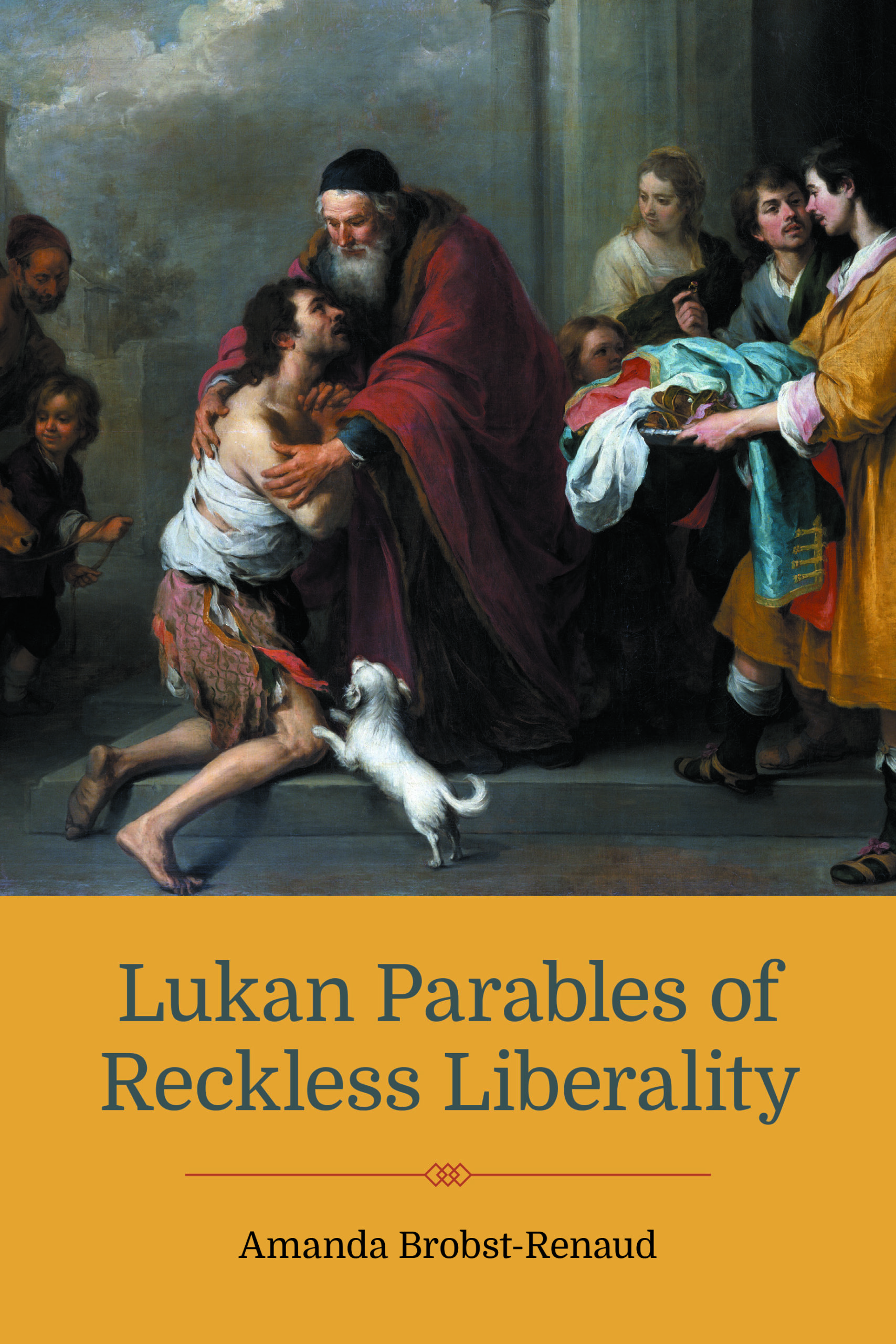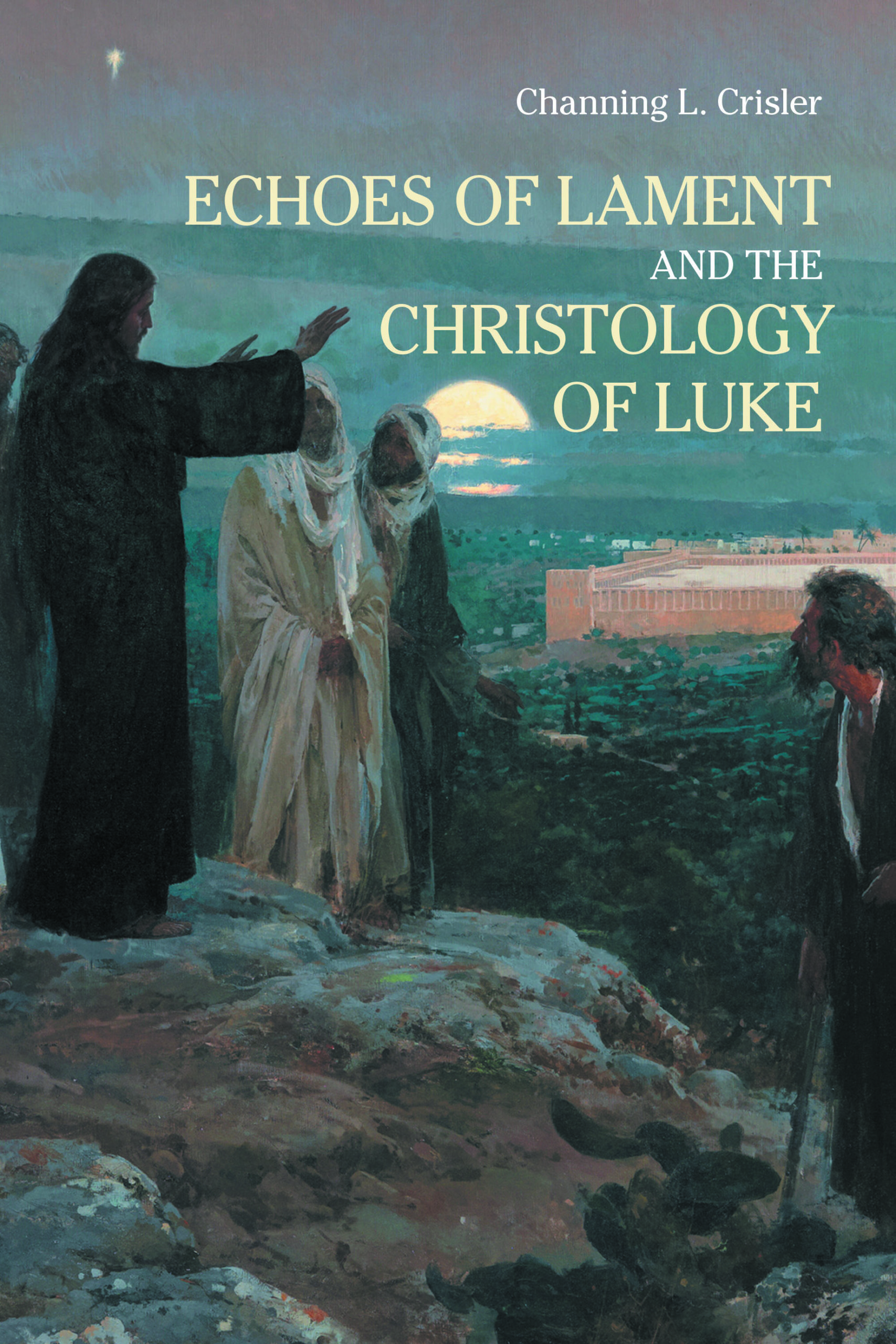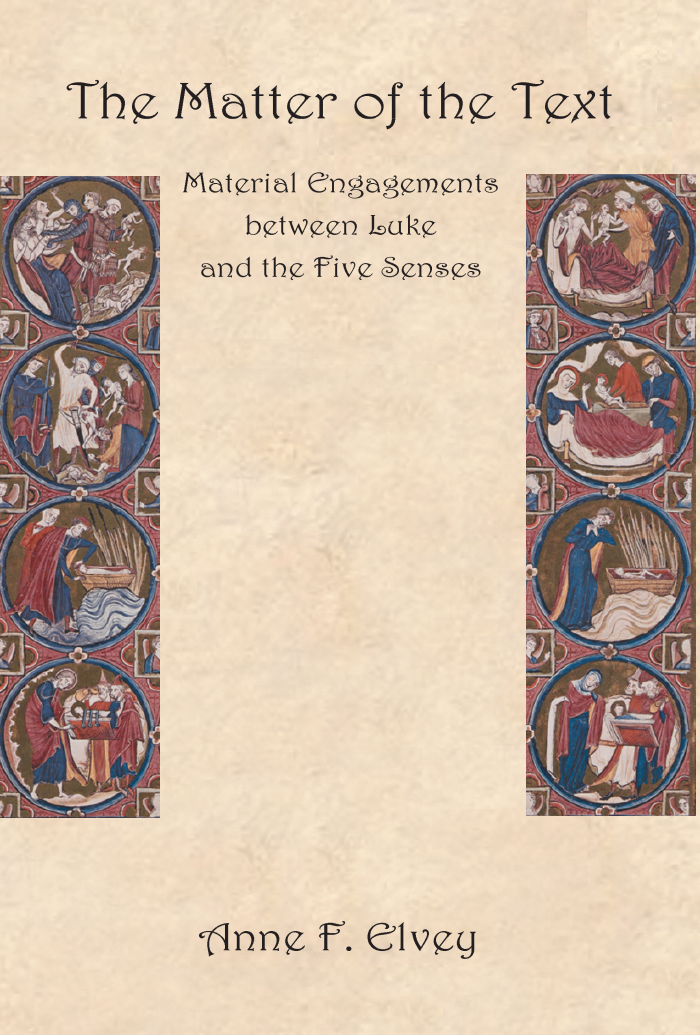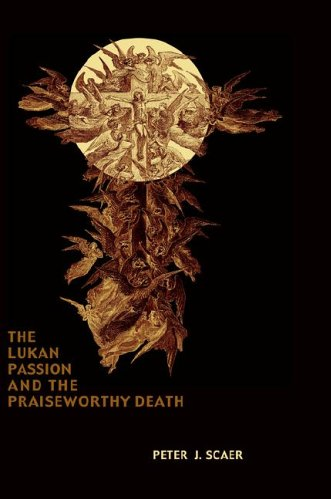Lukan Parables of Reckless Liberality
Published: Apr 2021
£60.00
From among the many parables in Luke, Amanda Brobst-Renaud chooses three, which she names 'parables of reckless liberality': the Prodigal Son, the Shrewd Steward, and the Rich Man and Lazarus. Picking up on the supposed slur that Jesus 'welcomes sinners and dines with them', Luke encourages his audience in these parables from chaps. 15 —16 in a practice of giving excessively to the wrong people at inappropriate times (flouting Aristotle's advice on liberality in the Nicomachean Ethics).
Each parable in this volume presents at least one of its characters in crisis; these situations demand a decisive response. We all know the crises faced by the younger son, the steward, and the rich man, but the crises confronting the elder son and the rich man's brothers are equally dire, starkly sketched by the open questions left hanging at the end of each parable. Will the elder son join the party, celebrating his once-dead younger brother? Will the steward secure an eternal welcome? Will the rich man's brothers heed Moses and the prophets, or will they meet the same fate as the rich man?
In each case, reckless liberality answers the characters' quandaries and demands of Luke's auditors that they choose between emulating or avoiding the behaviors of the characters. The elder son should join the party and imitate his father's reckless liberality: giving to someone undeserving, at an inappropriate time, and to an excessive amount. The steward's highly questionable profligacy plus his debt-reduction schemes nevertheless earn his master's praise and secure his welcome (Lk. 16.9). The rich man's brothers should listen to the call of the law and the prophets to care for the poor and disenfranchised, and show reckless liberality to any Lazarus on their thresholds. Showing reckless liberality gives entrance into the eschatological party (Lk. 16.16).
Lukan Parables of Reckless Liberality
£60.00
From among the many parables in Luke, Amanda Brobst-Renaud chooses three, which she names 'parables of reckless liberality': the Prodigal Son, the Shrewd Steward, and the Rich Man and Lazarus. Picking up on the supposed slur that Jesus 'welcomes sinners and dines with them', Luke encourages his audience in these parables from chaps. 15 —16 in a practice of giving excessively to the wrong people at inappropriate times (flouting Aristotle's advice on liberality in the Nicomachean Ethics).
Each parable in this volume presents at least one of its characters in crisis; these situations demand a decisive response. We all know the crises faced by the younger son, the steward, and the rich man, but the crises confronting the elder son and the rich man's brothers are equally dire, starkly sketched by the open questions left hanging at the end of each parable. Will the elder son join the party, celebrating his once-dead younger brother? Will the steward secure an eternal welcome? Will the rich man's brothers heed Moses and the prophets, or will they meet the same fate as the rich man?
In each case, reckless liberality answers the characters' quandaries and demands of Luke's auditors that they choose between emulating or avoiding the behaviors of the characters. The elder son should join the party and imitate his father's reckless liberality: giving to someone undeserving, at an inappropriate time, and to an excessive amount. The steward's highly questionable profligacy plus his debt-reduction schemes nevertheless earn his master's praise and secure his welcome (Lk. 16.9). The rich man's brothers should listen to the call of the law and the prophets to care for the poor and disenfranchised, and show reckless liberality to any Lazarus on their thresholds. Showing reckless liberality gives entrance into the eschatological party (Lk. 16.16).
Reading the Magnificat in Australia: Unsettling Engagements
Published: Nov 2020
£70.00
Biblical songs have multiple afterlives. In a history of invasion, their reverberations are poignant. What is now called Australia is a continent of many First Nations where Country has been sung for tens of thousands of years before the Bible arrived as part of the cultural cargo of the colonisers. Reading the Magnificat in Australia focuses on one text, Mary's Magnificat, around two thousand years old in its Lukan form, and carrying Hebraic traditions some thousand or more years older. First Nations traditions are older still.
In this colonial context, the Magnificat inspired settler-migrant writing, composition and art. Reading the Magnificat in Australia is a settler reading, but not a conventional one. It offers a performative, conversational reading trajectory that places instances of cultural reception of the Magnificat in the context of colonial occupation of Country, the problematics of whiteness, and the ensuing hiatuses for settler biblical scholars in Australia.
Reading the Magnificat as a song of protest, placed in the mouth of a young Jewish woman of the first century ce, Anne Elvey sketches a counter-colonial reading practice that in compassionate grief and hope is attentive to the ecological trauma of our time. The readings engage with creative responses to the Magnificat, from pious verse to abstract expressionist art, and include a number of the author's creative engagements in response. Grounded in feminist and ecological approaches, Reading the Magnificat in Australia employs hermeneutics of restraint, intertextual engagement and creative witness, rereading the biblical text in relation to contexts of conflict, intersections of race, gender, species and sexuality, constructive and deconstructive materialities in colonised space, and finally the song of birds (of which the Australian magpies on the front cover are an emblem). This listening again to an ancient text reimagines an aesthetics of reading-as-writing that opens to a situated and unsettled praxis, where the Magnificat points inward to its material contingency as a colonial artefact and outward toward contemporary songs of protest.
Reading the Magnificat in Australia: Unsettling Engagements
£70.00
Biblical songs have multiple afterlives. In a history of invasion, their reverberations are poignant. What is now called Australia is a continent of many First Nations where Country has been sung for tens of thousands of years before the Bible arrived as part of the cultural cargo of the colonisers. Reading the Magnificat in Australia focuses on one text, Mary's Magnificat, around two thousand years old in its Lukan form, and carrying Hebraic traditions some thousand or more years older. First Nations traditions are older still.
In this colonial context, the Magnificat inspired settler-migrant writing, composition and art. Reading the Magnificat in Australia is a settler reading, but not a conventional one. It offers a performative, conversational reading trajectory that places instances of cultural reception of the Magnificat in the context of colonial occupation of Country, the problematics of whiteness, and the ensuing hiatuses for settler biblical scholars in Australia.
Reading the Magnificat as a song of protest, placed in the mouth of a young Jewish woman of the first century ce, Anne Elvey sketches a counter-colonial reading practice that in compassionate grief and hope is attentive to the ecological trauma of our time. The readings engage with creative responses to the Magnificat, from pious verse to abstract expressionist art, and include a number of the author's creative engagements in response. Grounded in feminist and ecological approaches, Reading the Magnificat in Australia employs hermeneutics of restraint, intertextual engagement and creative witness, rereading the biblical text in relation to contexts of conflict, intersections of race, gender, species and sexuality, constructive and deconstructive materialities in colonised space, and finally the song of birds (of which the Australian magpies on the front cover are an emblem). This listening again to an ancient text reimagines an aesthetics of reading-as-writing that opens to a situated and unsettled praxis, where the Magnificat points inward to its material contingency as a colonial artefact and outward toward contemporary songs of protest.
Echoes of Lament in the Christology of Luke’s Gospel
Published: Apr 2020
£70.00
Scholars have long recognized that prayer and Israel's Scriptures play a pivotal role in the Christology of Luke. In this study, these two features converge in an underappreciated feature of Luke's Gospel, namely the many laments uttered to Jesus and by Jesus. Lukan characters frequently cry out to Jesus in a way that echoes the prayers of lament directed to Yhwh in Israel's Scriptures.
As well, the Lukan Jesus utters his own laments, also echoing prayers of lament from Israel's Scriptures. Crisler suggests that the interplay between the laments crafted by Luke and laments from Israel's Scriptures produce highly suggestive Christological points of resonance. Luke consistently characterizes Jesus as both someone who represents God by answering laments as only Yhwh can and as a righteous lamenter who models, teaches, and participates in lament to Israel's God. This double characterization is particularly visible in the crucifixion scene where the Lukan Jesus both answers and participates in lament. Crisler considers how these echoes of lament shape our understanding of Lukan Christology and make a contribution to ongoing debates about earliest Christology.
Echoes of Lament in the Christology of Luke’s Gospel
£70.00
Scholars have long recognized that prayer and Israel's Scriptures play a pivotal role in the Christology of Luke. In this study, these two features converge in an underappreciated feature of Luke's Gospel, namely the many laments uttered to Jesus and by Jesus. Lukan characters frequently cry out to Jesus in a way that echoes the prayers of lament directed to Yhwh in Israel's Scriptures.
As well, the Lukan Jesus utters his own laments, also echoing prayers of lament from Israel's Scriptures. Crisler suggests that the interplay between the laments crafted by Luke and laments from Israel's Scriptures produce highly suggestive Christological points of resonance. Luke consistently characterizes Jesus as both someone who represents God by answering laments as only Yhwh can and as a righteous lamenter who models, teaches, and participates in lament to Israel's God. This double characterization is particularly visible in the crucifixion scene where the Lukan Jesus both answers and participates in lament. Crisler considers how these echoes of lament shape our understanding of Lukan Christology and make a contribution to ongoing debates about earliest Christology.
The Matter of the Text: Material Engagements Between Luke and the Five Senses
Published: May 2011
£60.00
When the Lukan Jesus stands up to read in the Nazareth synagogue, he unrolls and rolls up a scroll. At this moment —which scholars have read as programmatic for the Gospel of Luke —the material text frames the written and spoken word. Here reading is an engagement with the senses of touch, sight and hearing. The organs of sense —skin, eyes, ears and mouth —function as mediators of the material text.
By contrast, our contemporary practices of reading as biblical scholars and critics commonly ignore the underlying materiality that is given to writing. In an ecological context where the mass production of Bibles is part of a consumerist economics that does not walk lightly on the Earth, and in an Australian postcolonial context where Bibles arrived as material artefacts of European colonizers, this book asks what modes of reading might best be suited to the materiality of the text. Engaging with the Gospel of Luke and the five senses, The Matter of the Text enacts a mode of reading that attends to the underlying materiality of the text.
Reading with the senses offers a way of imagining the mutual touching of artefact and writing and the absent presence of the material text, where matter is given to the word as a visible voice.
The Matter of the Text: Material Engagements Between Luke and the Five Senses
£60.00
When the Lukan Jesus stands up to read in the Nazareth synagogue, he unrolls and rolls up a scroll. At this moment —which scholars have read as programmatic for the Gospel of Luke —the material text frames the written and spoken word. Here reading is an engagement with the senses of touch, sight and hearing. The organs of sense —skin, eyes, ears and mouth —function as mediators of the material text.
By contrast, our contemporary practices of reading as biblical scholars and critics commonly ignore the underlying materiality that is given to writing. In an ecological context where the mass production of Bibles is part of a consumerist economics that does not walk lightly on the Earth, and in an Australian postcolonial context where Bibles arrived as material artefacts of European colonizers, this book asks what modes of reading might best be suited to the materiality of the text. Engaging with the Gospel of Luke and the five senses, The Matter of the Text enacts a mode of reading that attends to the underlying materiality of the text.
Reading with the senses offers a way of imagining the mutual touching of artefact and writing and the absent presence of the material text, where matter is given to the word as a visible voice.
Five Stones and a Sling: Memoirs of a Biblical Scholar
Published: Oct 2009
£14.95
Michael Goulder is a scholar who has always taken an original approach to the Bible and biblical criticism. He has developed five major theories, which challenged received opinion among the learned; and the book tells the story of how these 'stones' fared when confronting the biblical establishment. He wryly admits that his slinging has been rather less successful than David's against Goliath.
Among his five theories a special place must be given to his demonstration of how much of the teaching ascribed to Jesus actually derived from the evangelists —the Lord's Prayer for example being composed by Matthew out of Jesus' prayers in Gethsemane. The parables too are the composition of the evangelists, Matthew characteristically writing of kings and rich merchants, while Luke speaks of women, stewards, a beggar and a Samaritan. A long-rooted error Michael Goulder has valiantly opposed has been the belief that Matthew and Luke were both dependent on a lost source, Q; in fact, he argues, Luke was familiar with Matthew's Gospel and copied or developed its teaching as he thought best.
Goulder has worked at the Old Testament as well as the New. He concludes that the Psalms were not the individual prayers of pious Israelites, as Gunkel and others supposed, but the compositions of kings or their poets, deploring national disasters and praying for blessing at the great autumn festival.
This account of Goulder's scholarly work is fascinatingly interwoven with that of his life and ministry; and there are many anecdotes and vignettes of other people that are both amusing and interesting. He was ordained a priest in the Anglican Church, and though he resigned his Orders in 1981, he never lost his love of the Bible.
Five Stones and a Sling: Memoirs of a Biblical Scholar
£14.95
Michael Goulder is a scholar who has always taken an original approach to the Bible and biblical criticism. He has developed five major theories, which challenged received opinion among the learned; and the book tells the story of how these 'stones' fared when confronting the biblical establishment. He wryly admits that his slinging has been rather less successful than David's against Goliath.
Among his five theories a special place must be given to his demonstration of how much of the teaching ascribed to Jesus actually derived from the evangelists —the Lord's Prayer for example being composed by Matthew out of Jesus' prayers in Gethsemane. The parables too are the composition of the evangelists, Matthew characteristically writing of kings and rich merchants, while Luke speaks of women, stewards, a beggar and a Samaritan. A long-rooted error Michael Goulder has valiantly opposed has been the belief that Matthew and Luke were both dependent on a lost source, Q; in fact, he argues, Luke was familiar with Matthew's Gospel and copied or developed its teaching as he thought best.
Goulder has worked at the Old Testament as well as the New. He concludes that the Psalms were not the individual prayers of pious Israelites, as Gunkel and others supposed, but the compositions of kings or their poets, deploring national disasters and praying for blessing at the great autumn festival.
This account of Goulder's scholarly work is fascinatingly interwoven with that of his life and ministry; and there are many anecdotes and vignettes of other people that are both amusing and interesting. He was ordained a priest in the Anglican Church, and though he resigned his Orders in 1981, he never lost his love of the Bible.
Acts and Ethics
Published: Dec 2005
£50.00
This volume, the fruit of the sessions on the Book of Acts at the Annual Meeting of the Society of Biblical Literature, in San Antonio, Texas, in November 2004, contains these papers:
Stanley E. Porter, 'The Genre of Acts and the Ethics of Discourse'
Robert L. Brawley, 'Social Identity and the Aim of Accomplished Life in Acts 2'
F. Scott Spencer, 'Wise Up, Young Man: The Moral Vision of Saul and Other "Neaniskoi" in Acts'
Thomas E. Phillips, 'Paul as a Role Model in Acts: The "We"-Passages in Acts 16 and Beyond'
Richard P. Thompson, "What Do You Think You Are Doing, Paul?" Synagogues, Accusations, and Ethics in Paul's Ministry in Acts 16-21'
Matthew L. Skinner, 'Unchained Ministry: Paul's Roman Custody (Acts 21 —28) and the Sociopolitical Outlook of the Book of Acts'
C. Kavin Rowe, 'Authority and Community: Lukan Dominium in Acts'
Robert C. Tannehill, 'Do the Ethics of Acts Include the Ethical Teaching in Luke?'
Pamela Hedrick, 'The Good Samaritan, Cornelius, and the Just Use of Force'
Acts and Ethics
£50.00
This volume, the fruit of the sessions on the Book of Acts at the Annual Meeting of the Society of Biblical Literature, in San Antonio, Texas, in November 2004, contains these papers:
Stanley E. Porter, 'The Genre of Acts and the Ethics of Discourse'
Robert L. Brawley, 'Social Identity and the Aim of Accomplished Life in Acts 2'
F. Scott Spencer, 'Wise Up, Young Man: The Moral Vision of Saul and Other "Neaniskoi" in Acts'
Thomas E. Phillips, 'Paul as a Role Model in Acts: The "We"-Passages in Acts 16 and Beyond'
Richard P. Thompson, "What Do You Think You Are Doing, Paul?" Synagogues, Accusations, and Ethics in Paul's Ministry in Acts 16-21'
Matthew L. Skinner, 'Unchained Ministry: Paul's Roman Custody (Acts 21 —28) and the Sociopolitical Outlook of the Book of Acts'
C. Kavin Rowe, 'Authority and Community: Lukan Dominium in Acts'
Robert C. Tannehill, 'Do the Ethics of Acts Include the Ethical Teaching in Luke?'
Pamela Hedrick, 'The Good Samaritan, Cornelius, and the Just Use of Force'
The Lukan Passion and the Praiseworthy Death
Published: Oct 2005
£40.00
In the ancient world, crucifixion epitomized all that was shameful, servile and lowly. Jesus' death on a cross would have been a stumbling block for many. Luke recognized this prevailing attitude toward crucifixion, and sought to show that Jesus' death was noble and praiseworthy, even according to the Roman world's own standards.
Scaer argues that Luke drew upon the Noble Death tradition, especially as found in Graeco-Roman rhetoric, in depicting Jesus as a man of courage and virtue. Luke also made use of Jewish-Hellenistic martyrological traditions to present Jesus' death as worthy not only of honour, but even of emulation. Most provocatively, Scaer contends that the third evangelist drew specific motifs from the Socrates story in order to show that the founder of the new Christian movement was a noble and just man, deserving of the utmost respect.
In using these Graeco-Roman sources as he fashioned his narrative of Jesus' death, Luke reveals himself as a masterful author in the classical tradition, intent on portraying Christianity as a world class religion.
The Lukan Passion and the Praiseworthy Death
£40.00
In the ancient world, crucifixion epitomized all that was shameful, servile and lowly. Jesus' death on a cross would have been a stumbling block for many. Luke recognized this prevailing attitude toward crucifixion, and sought to show that Jesus' death was noble and praiseworthy, even according to the Roman world's own standards.
Scaer argues that Luke drew upon the Noble Death tradition, especially as found in Graeco-Roman rhetoric, in depicting Jesus as a man of courage and virtue. Luke also made use of Jewish-Hellenistic martyrological traditions to present Jesus' death as worthy not only of honour, but even of emulation. Most provocatively, Scaer contends that the third evangelist drew specific motifs from the Socrates story in order to show that the founder of the new Christian movement was a noble and just man, deserving of the utmost respect.
In using these Graeco-Roman sources as he fashioned his narrative of Jesus' death, Luke reveals himself as a masterful author in the classical tradition, intent on portraying Christianity as a world class religion.








2 Timothy
2 Timothy